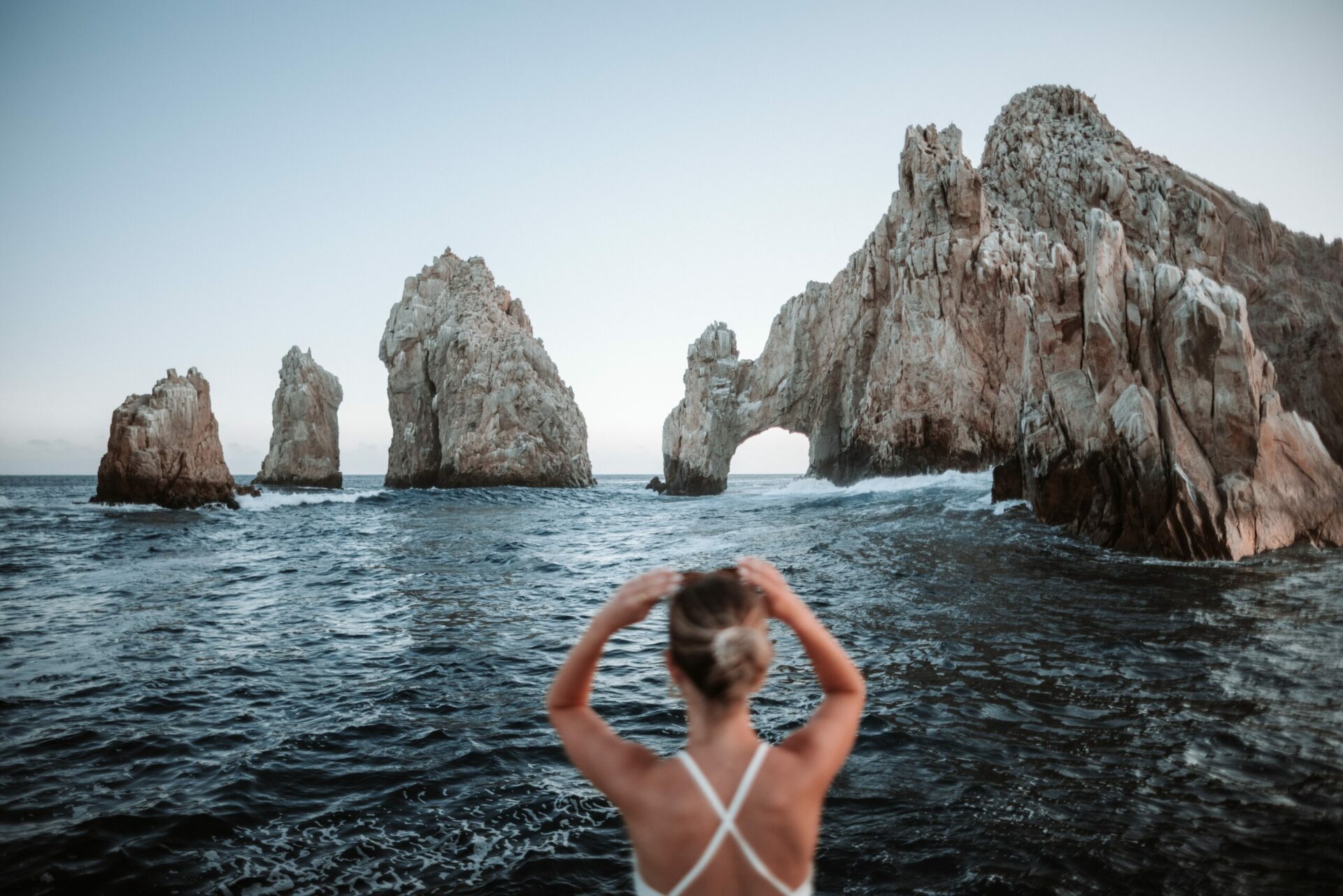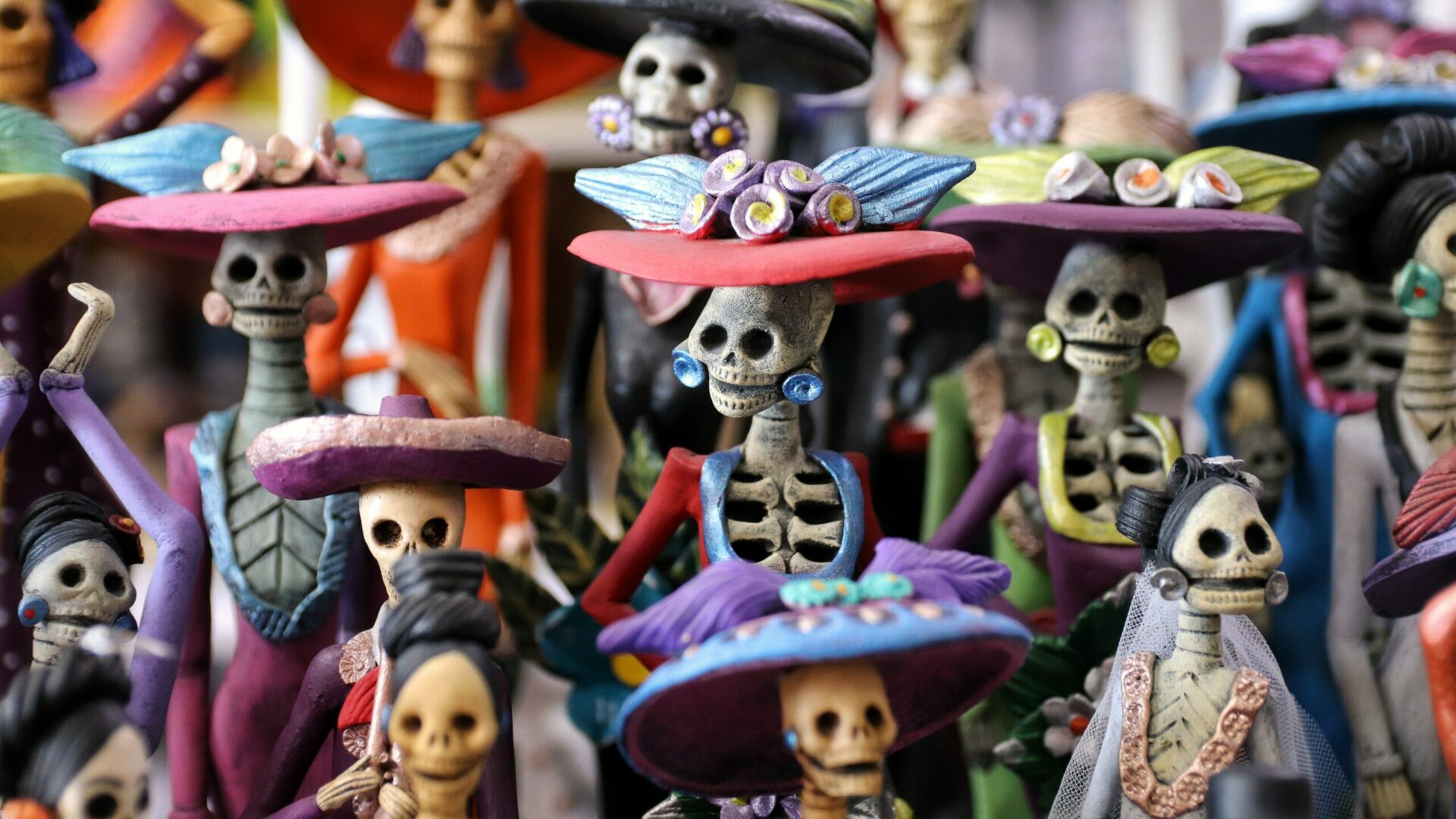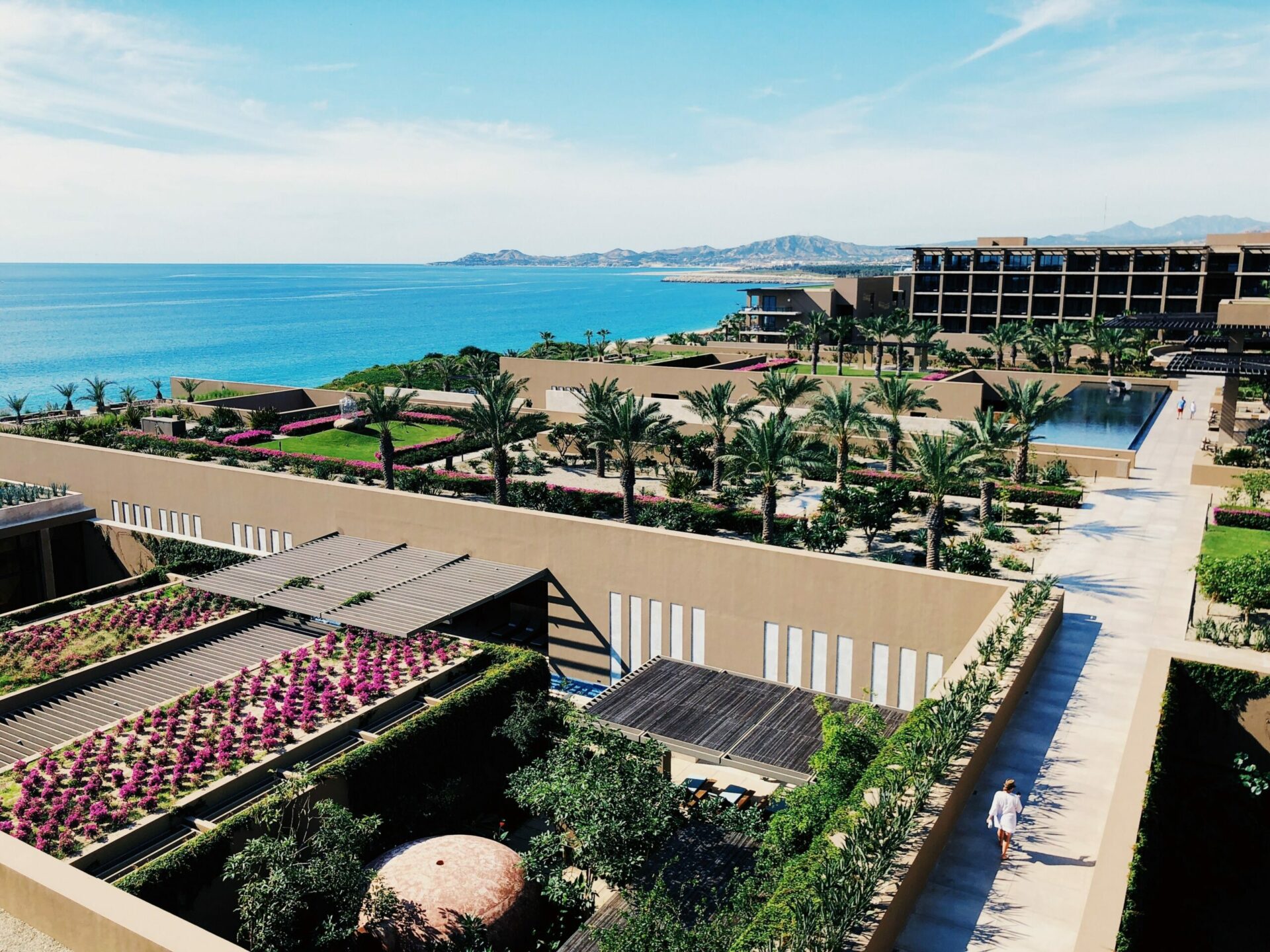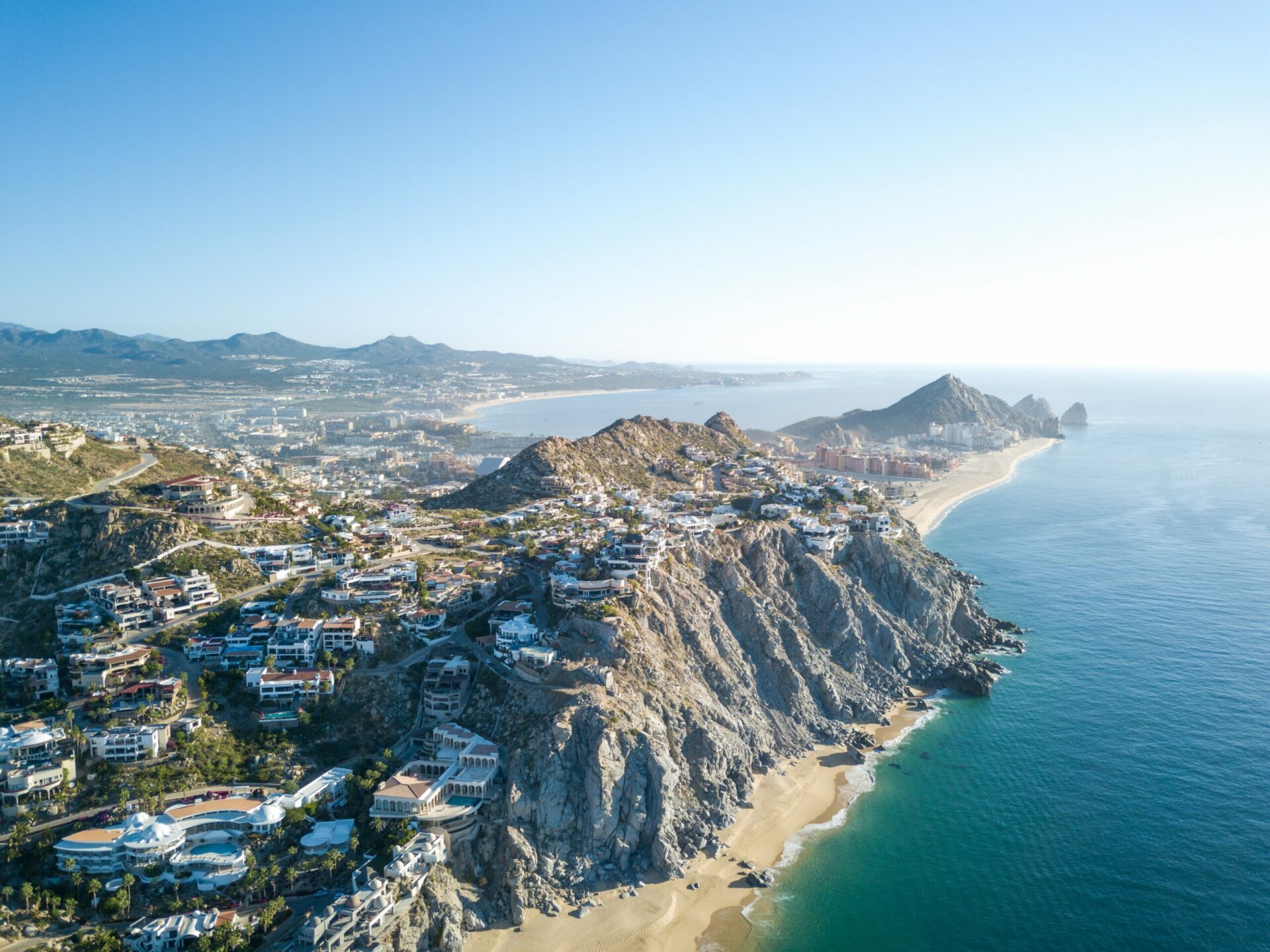Living in Cabo: Paradise on the Southern Tip of Baja
- Los Cabos
- Baja California Sur
- Mexico
Table of Contents
Over 320 days of sunshine, year-round warm weather and beautiful beaches define the expat lifestyle in Los Cabos. You can choose from the pulsating night life of tourist-magnet Cabo San Lucas, the more traditional side of Mexico in San José del Cabo or quieter areas along the southern tip of Baja California Sur. Wherever you choose to live, Los Cabos is an easy place for expats to feel welcome and at home.
If you are considering buying a home in Cabo moving to the Los Cabos area, you will want to read the information below. Just click on each topic in the table of contents above!
Get new listings in your inbox.
Get new listings in your inbox.
The Geography and Best Areas in Cabo
At the southern tip of the Baja California Peninsula, the Gulf of California and the Pacific Ocean meet the subtropical desert landscape of the Los Cabos region in Baja California Sur.
Los Cabos, or The Capes in Spanish, is located about 900 miles southeast of San Diego, California. The Tropic of Cancer crosses the peninsula 50 miles north of Land’s End.
A region of mountains and coastal plains, the mostly desert area is dry and rocky with over 320 days of sunshine each year and less than 10 inches of rain.
Mountains punctuate the landscape and are formed mainly of volcanic rock. Sierra de la Laguna and Sierra de San Lazaro range from 1,300 ft. to nearly 3,300 ft. in elevation. Their western faces slope more gently toward the Pacifc Ocean, but show more rugged eastern faces to the Gulf of California, also known as the Sea of Cortez.
The main river in the area is the San José River, which flows north to south primarily during the summer rainy season. The river creates an estuary at its southern end, which is the third largest in Mexico and home to native and migratory birds, including 250 species of tropical birds.

Los Cabos beaches are known worldwide and make up about 25 percent of the region’s topography. Some of the more popular beaches include Los Frailes, Buena Vista, Agua Caliente, Puerto Chileno and Punta Colorada. The most popular is Lover’s Beach near Cabo San Lucas, which has great views of iconic El Arco, the natural stone arch that is the symbol of Los Cabos.
The main population of Los Cabos stretches about 20 miles from Cabo San Lucas to San José del Cabo. The area between the two cities is known as the Resort Corridor, a stretch of beach dotted primarily with hotels and condominiums. Los Cabos also includes smaller communities that line the beaches between the Pacific Ocean and the Gulf of California: Colonia del Sol, Las Veredas, Colonia Los Congrejos, San José Viego and La Ribera.
Los Cabos is in the Mountain Standard Time zone and observes daylight saving time beginning the first Sunday in April and ending the last Sunday in October.
Climate in Los Cabos
Winters are beautiful in Los Cabos with an average high of 77 F in January and a low of 55 F for pleasant sleeping weather. No need for winter heating here, but summer demands air conditioning.
Humidity is higher than you might expect for a desert climate, although it never reaches above 70 percent. Just enough to ease those wrinkles but not enough to make you feel uncomfortable.
Winter sea temperatures are cooler than mainland Mexico, dipping as low as 70 F but the desert sun warms the water to the low 80s by summer.
Los Cabos also experiences hurricanes from June through October. The most recent was Hurricane Odile in 2014, a Category 3 storm with sustained winds over 125 mph. Over the last 10 years, five hurricanes have visited the area.
And like most of Mexico, the region can experience earthquakes from time to time.
Things to do in Cabo
Cabo San Lucas is a major international tourist destination by air and by sea and is the most Americanized of all the towns in Los Cabos. Cabo, as it is often called, is well known for its nightlife, with restaurants and bars that are open until the wee hours of the morning. Salsa and Mariachi music fill every night of the year and margaritas flow until dawn. English is widely spoken in Cabo.
Just 20 miles away on the eastern side of the Resort Corridor from Cabo is much more sedate San José del Cabo. If you are looking for a quieter, more traditional Mexican town with many art galleries, excellent shopping and good restaurants, this may be more your kind of place.

Los Cabos is known internationally for its deep-sea sport fishing and is home to more big-money tournaments than just about anywhere. Tournament season starts in late June and runs into November with events in the East Cape, Cabo San Lucas and La Playita or Puerto Los Cabos near San José del Cabo. Beginning in June with the Stars and Stripes tournament, six major tournaments are held through November each year. Bisbee’s Black and Blue tournament in October is the largest of its kind.
With an abundance of seafood, Los Cabos restaurants offer delicious dishes like Tacos de Pescado (fish tacos), Ceviche (lime-cured fish with cilantro and vegetables served on a tostada), Machaca (salted and dried shredded beef served with cooked vegetables and spices) and Almejas brujas (stuffed clams with vegetables and spices). Wash these dishes down with a cold Cerveza Pacífico, the preferred local beer.
Although much of the food and goods are imported into the area, a farmers market in San José del Cabo offers organic fruits and vegetable. For food shopping, Mexican supermarket chains such as Soriana, CCC and Mega are available, in addition to U.S.-based Costco and Wal-Mart.
For shopping, the Puerto Paraiso shopping mall in Cabo San Lucas has a wide variety of stores, entertainment and lodging spread out over 500,000 square feet of space on three levels. Costco, Wal-Mart and other brand name stores can be found in Los Cabos, also. Local mercados and shops are well stocked with a variety of Mexican handicrafts and consumer goods.
The people of Los Cabos also celebrate a wide range of religious and cultural festivals throughout the year, beginning with Three Kings Day (Día de los Reyes) – the traditional gift-giving day in the Mexican celebration of holidays – and ending with the Feast of the Virgin of Guadalupe, which is a display of traditional culture celebrated with street fairs, fireworks and processions.
With so much sunshine, warm weather and great beaches, you can spend most of your day outdoors enjoying sailing, hiking, swimming, snorkeling, scuba diving, deep sea fishing, biking, kayaking, wave running, surfing, parasailing, horseback riding, golfing, playing tennis or just lying on your favorite beach. Be sure to check each beach, though. Some can be dangerous for swimming.

Cost of Living in Cabo
The cost of living in Los Cabos generally is a bit higher than much of mainland Mexico primarily because it is a resort area and also imports much of its food and other goods from elsewhere.
Your cost of living in this region will depend upon the type of lifestyle you want to have and may be similar to what you left in your home country, if you want to maintain the same kind of lifestyle.
To compare the cost of living between Los Cabos and where you live, visit Expatistan or Numbeo, two popular crowd-sourced cost of living websites.
Education in Cabo
The Los Cabos area offers many education options for your family, including public schools, private schools and international schools. Homeschooling is also allowed in Mexico. Many expats choose to put their children in private, bilingual schools because public schools often are crowded.
The public school system in Mexico is overseen by the Secretariat of Public Instruction (Secretaria de Educacion Publica, SEP). Attendance is mandatory for all students ages 6 to15. Basic education includes pre-primary school for children 3 to 5, elementary school for children 6 to 12 and secondary school for those 13 to 15.
Students at the age of 16 are given the option to continue schooling at the high school level. There are two possible degree options. The first is a qualified technician degree, or profesional tecnico, which is chosen by less than 10 percent of all students. The other is a high-school diploma, or bachillerato, a much more popular option.
The school year in Mexico starts in mid-August and ends in the first days of July and, by law, must cover 200 days.
Many expats opt to enroll their children in international schools, such as Colegio el Camino, which provides K-12 programs. International schooling is provided for students from elementary school through post-compulsory school. American college entrance examinations (SAT, ACT and AP) and/or British GSCE A-level examinations are available through most international schools. Many international schools also offer either the globally recognized International Baccalaureate (IB) Program or the Cambridge IGCSE and instruction generally is conducted in English and Spanish. Certification from these schools is accepted worldwide for university entrance.
A few other choices in the area include:
Colegio Amaranto International School
Homeschooling is another option for expats in the Los Cabos region. There are no laws prohibiting homeschooling in the country, if you choose to do so. You can find out details at this Home School Legal Defense Association (HSLDA) website.
Los Cabos Safety
The U.S. Department of State says that crime in Mexico varies widely by location with the worst crime reported in the states that border the United States and the south of Mexico, mostly because of drug cartel activity.

Los Cabos is one of the better areas in Mexico for personal safety, although minor thefts and break-ins have been reported. The U.S. Department of State has not issued any travel warnings for the Los Cabos area.
You can stay updated on travel warnings and safety information at this U.S. Department of State website.
Los Cabos’ Healthcare System
One of the important benefits of living in the Los Cabos area – and Mexico in general – is the significantly lower cost of healthcare. Healthcare services generally are more than 50 percent less expensive than similar services in the U.S.
Los Cabos has a wealth of healthcare professionals and facilities and has become a magnet for top medical professionals.
There are a number of walk-in clinics and hospitals located throughout the area that are staffed with well-trained physicians. Most doctors are certified in both the United States and Mexico and many are bi-lingual.
Los Cabos also has a number of well-equipped hospitals to meet the needs of local residents and expats.
Amerimed, which owns hospitals in a number of Mexican cities, has facilities in both Cabo San Lucas and San José del Cabo. Amerimed was the first healthcare provider to specialize in medical tourism in Mexico.
Baja Medical Response has been providing specialized medical services to expats and local residents since 1993. It claims to be the largest and best-equipped private hospital in Los Cabos and has advanced medical technology and bilingual physicians.
BlueNet Hospitals offer similar services and have a number of partnerships with American healthcare providers, such as the Stanford School of Medicine and the UC San Diego Health System. BlueNetHospitals is the leading Private Health Care System in Los Cabos providing state-of-the-art treatments, highly personalized services, and the most innovative technology in a friendly, safe, and compassionate environment.
Located between Cabo San Lucas and San José del Cabo is Hospital H+ Los Cabos. It is part of a group of hospitals that also serve San Miguel de Allende and Querétaro.
Dental services are also much less expensive. Well-trained dentists provide a wide range of procedures from cleaning to implants at more than 50 percent less than comparable services in the U.S. Most dentists also are bi-lingual.
For a list of a few dental providers in Los Cabos, visit this WhatCliniic website.

Transportation in Cabo
Travel distances within the Los Cabos area are not great and a variety of public transportation options are available, although most expats rely on their own automobiles to get around.
Taxis are plentiful in Los Cabos but can be expensive because it is an international resort area. Most taxis in Cabo San Lucas are large vans that can hold more than 10 passengers. Prices vary and may be negotiable. From Cabo to San José del Cabo taxi fare should be about US$40 and taxi fare to either Cabo or San José del Cabo from the Resort Corridor should be around US$15.
Water taxis located in the Cabo San Lucas downtown marina are available to take you to Cabo’s popular beaches, like Lover’s Beach. Rates for water taxis are not metered, but generally cost between US$3 to US$10 one way.
Buses are an inexpensive way to get around Los Cabos. The bus line that services the Los Cabos area – Subur Cabos – runs every 15 minutes, from 5:30 in the morning to around 10 in the evening. Buses run between Cabo San Lucas and Santa Anita, which is north of the international airport. Buses also make stops along the Resort Corridor. Bus fares generally are about US$2.50 each way from town-to-town. Drivers change small bills and make stops only at designated bus stops.
